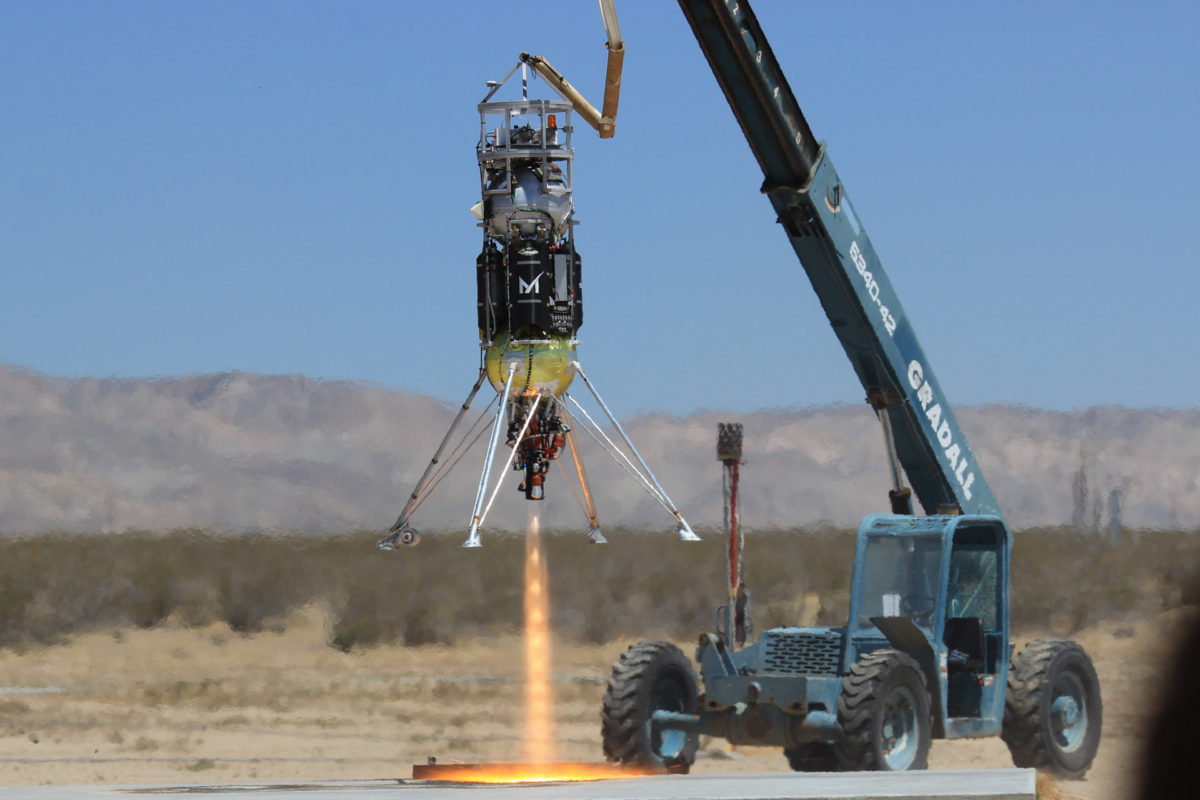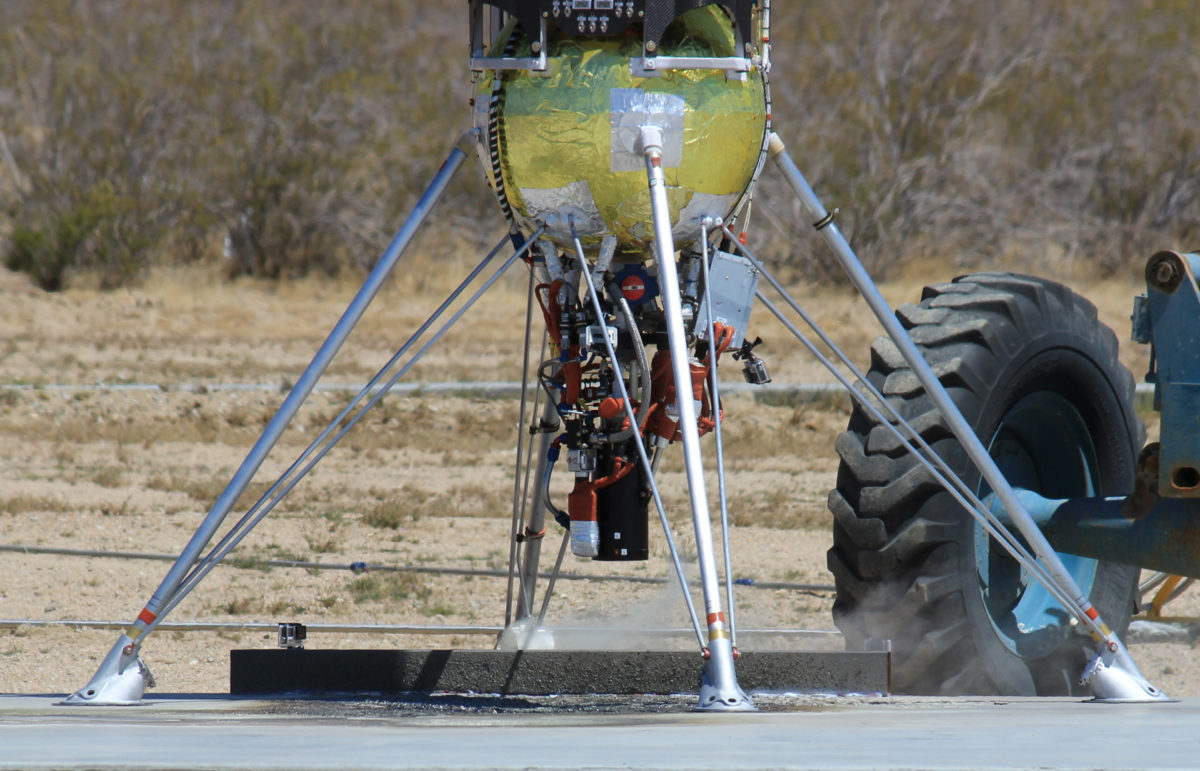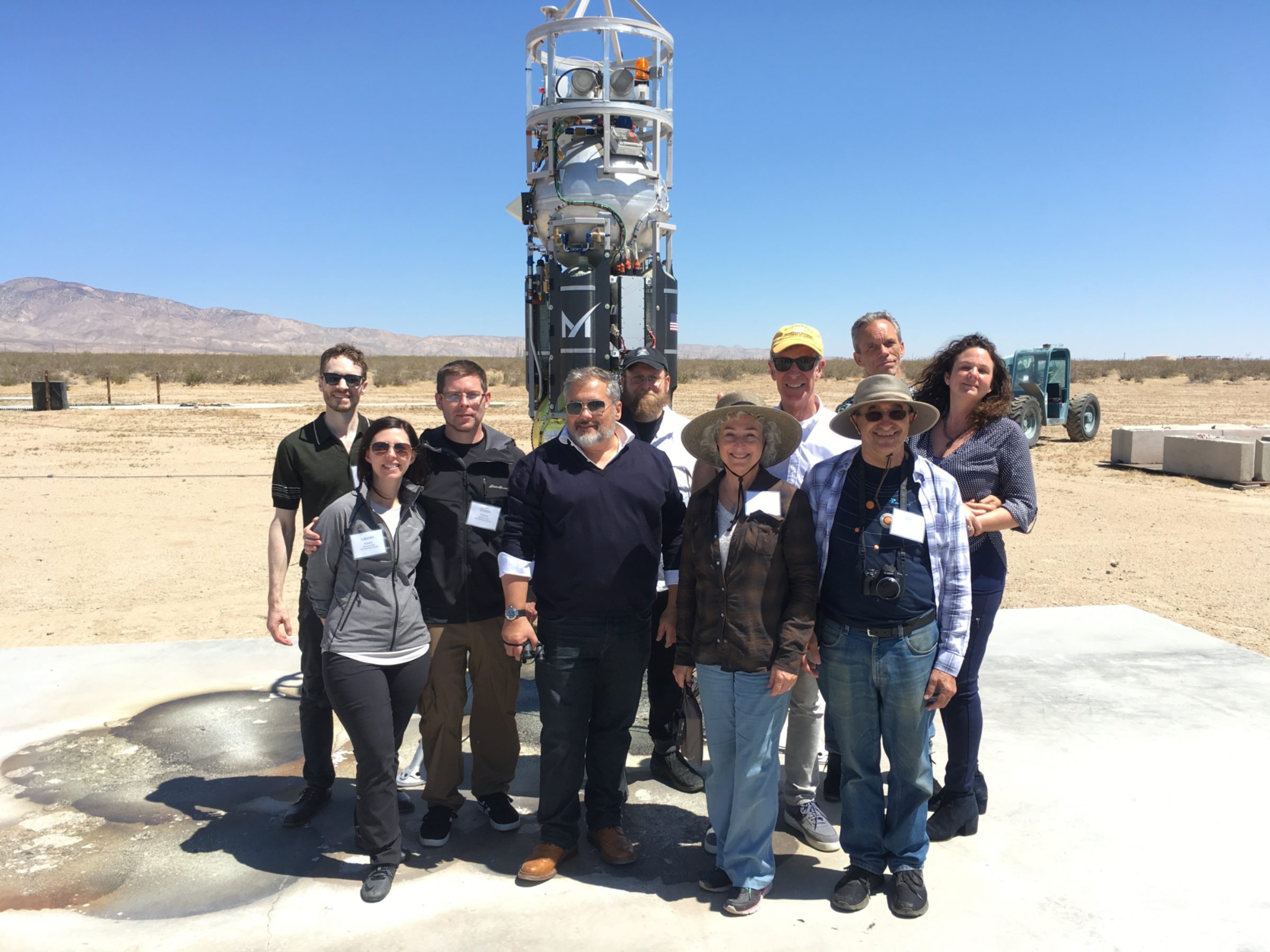Bruce Betts • Jun 07, 2018
A Planetary Vacuum Successfully Takes a Rocket Ride
Rocket science met planetary science in the California desert when PlanetVac, a new planetary surface sampling technique, was successfully tested on a Xodiac rocket. This was a major step in moving a Planetary Society supported project one step closer to flying in space someday. The Xodiac rocket lifted off, hovered and moved slightly, then landed PlanetVac in a bed of Mars soil simulant. PlanetVac gathered hundreds of grams of sample, the rocket lifted off again, moved, and landed.


The activity demonstrated that Honeybee Robotics’ PlanetVac could be adapted to a planetary lander, in this case replacing a landing foot of a Masten Space Systems Xodiac rocket. It also demonstrated PlanetVac could survive and thrive attached to the hot, shaking environment of a rocket. Successful demonstration of this so-called higher technology readiness level will make PlanetVac more likely to be selected to fly on future space missions.
PlanetVac is intended to be an alternative or additional way to do something that is challenging and very scientifically valuable: collect planetary samples, in other words, dirt and rocks from planetary surfaces using robotic spacecraft. PlanetVac uses gas to force the dirt up into a sampling container or instrument. Its use of only one moving part – a valve to release the gas – makes it reliable. And its relatively low mass and cost are also big pluses in the planetary game.
In 2013, Planetary Society members funded early tests of PlanetVac in a vacuum chamber at Mars pressures. The test was successful.
NASA selected PlanetVac for its Flight Opportunities program to fly on a Xodiac rocket. NASA sponsored the flight, and Planetary Society members and donors came together to provide the additional funding needed for Honeybee Robotics to adapt PlanetVac to the Xodiac. Several Planetary Society staff as well as some donors to the project got the opportunity to witness a flight.
The flights took place at the Mojave Air and Space Port in the southern California desert. The day started off with safety briefings from Masten personnel, then we and the rocket headed to the launch pad. After careful preparations and fueling of the liquid oxygen, the rocket launched, a spectacular sensory experience with magnificent visuals and big sound. Landing occurred about half a minute later a few meters away with the PlanetVac leg in the Mars simulant. Sampling itself took only ten seconds. The rocket flew back to its starting point and landed. Following venting of the remaining liquid oxygen and safety checks, we were allowed to approach the rocket and retrieve the PlanetVac sampling container. Targeting 100 grams of sample, Honeybee engineers were very excited when flights obtained more than 300 grams of sample. It was a big success and a great experience.


Thanks to all the Planetary Society supporters and members who made this possible!
Learn more about PlanetVac Xodiac:
- PlanetVac Xodiac main project page
- Planetary Radio show recorded the day of a flight
- The Planetary Post with video of a flight
- Coming soon: a more extensive video covering the flight
More images:


Let’s Go Beyond The Horizon
Every success in space exploration is the result of the community of space enthusiasts, like you, who believe it is important. You can help usher in the next great era of space exploration with your gift today.
Donate Today

 Explore Worlds
Explore Worlds Find Life
Find Life Defend Earth
Defend Earth

